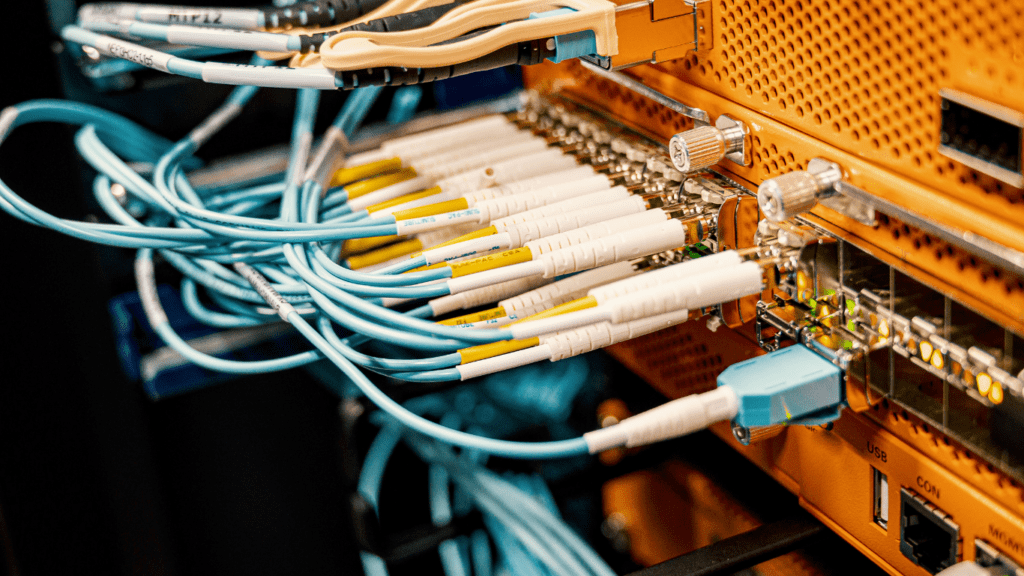Are you tired of Wi-Fi dead zones in your home or office? Imagine a network that blankets every corner with seamless connectivity. Enter mesh networks, the game-changer in the world of connectivity. In this article, I’ll delve into how mesh networks are revolutionizing the way we stay connected in our living and working spaces.
Gone are the days of relying on a single router struggling to reach every room. With mesh networks, it’s all about creating a web of interconnected nodes that work together to ensure a strong and reliable signal throughout your space. Say goodbye to dropped connections and hello to uninterrupted streaming, smooth video calls, and lag-free online gaming.
Join me as we explore the benefits, functionality, and future potential of mesh networks in transforming the connectivity landscape for homes and offices. Get ready to say goodbye to connectivity woes and embrace a new era of seamless network coverage.
Understanding Mesh Networks
Mesh networks are innovative systems that enhance network coverage by creating a web of interconnected devices, ensuring optimal connectivity throughout a given area. Instead of relying on a single router, mesh networks use multiple nodes to distribute signals efficiently, thereby eliminating Wi-Fi dead zones and ensuring seamless connectivity for various activities like streaming, video calls, and online gaming.
Within a mesh network, each node communicates with other nodes, forming a robust network that adapts to changes in the environment. This adaptive nature allows devices to connect to the closest and strongest signal source automatically, optimizing performance and minimizing signal interference.
The true power of mesh networks lies in their ability to provide reliable connectivity without sacrificing speed or stability. By spreading network coverage evenly across the space, mesh networks promise uninterrupted connectivity, making them ideal for both homes and offices where consistent network performance is crucial.
In the context of revolutionizing connectivity, mesh networks offer a scalable solution that can adapt to the evolving needs of modern technology users. With the ability to expand coverage by adding more nodes, mesh networks ensure that as technology advances and demands increase, the network can easily accommodate these changes, providing a future-proof connectivity solution for homes and offices alike.
Benefits of Mesh Networks in Home and Office Environments

Mesh networks offer a range of advantages that significantly improve connectivity and coverage in both home and office environments. Let’s explore these benefits in more detail.
Enhanced Coverage and Connectivity
Mesh networks provide enhanced coverage by utilizing multiple nodes that work together to ensure a strong and reliable signal throughout the space. This approach effectively eliminates Wi-Fi dead zones, allowing for seamless connectivity across all areas of the home or office. Whether you’re streaming content, making video calls, or engaging in online gaming, mesh networks offer consistent and uninterrupted connectivity for all your digital activities.
Seamless Roaming and Handoff
One of the key benefits of mesh networks is the seamless roaming and handoff capability they provide. As you move from one area to another within the network range, mesh nodes intelligently transfer your connection to the nearest and strongest signal source without any disruptions. This feature is particularly beneficial in environments where mobility is essential, ensuring a smooth transition between nodes without experiencing any downtime or signal drop-offs.
Scalability and Flexibility
Mesh networks offer unparalleled scalability and flexibility, making them ideal for environments with evolving connectivity needs. Whether you need to expand coverage in a larger home or office space, adding more nodes to a mesh network is a simple and straightforward process. This scalability allows you to customize your network according to your specific requirements, ensuring that your connectivity remains robust and reliable as your needs grow and change over time.
Implementation and Setup of Mesh Networks
In setting up mesh networks, the process is straightforward yet pivotal for optimizing connectivity within homes and offices. Mesh networks employ multiple nodes strategically placed to ensure reliable signals throughout the designated area, fostering uninterrupted connectivity for various tasks like streaming, video calls, and online gaming.
To initiate the implementation of a mesh network, the fundamental steps involve placing the nodes in strategic locations to cover the entire space effectively. I personally recommend positioning the nodes in central areas with minimal obstructions to facilitate seamless signal distribution. By strategically positioning the nodes, I ensure a robust network that minimizes dead zones and provides consistent connectivity across the premises.
Upon placing the nodes, the next crucial step I take is configuring the network settings to ensure optimal performance and coverage. I utilize the accompanying mobile application or web interface to customize settings such as network name, security preferences, and device prioritization. This personalized configuration enhances the network’s efficiency and security, catering to specific connectivity needs within the space.
Additionally, in larger environments or areas with complex layouts, I expand the mesh network by adding more nodes to extend coverage and maintain reliable connectivity throughout the entire space. This scalable feature enables me to adapt the network to evolving connectivity requirements without compromising performance or stability.
The implementation and setup of mesh networks involve strategically placing nodes, configuring network settings for optimal performance, and expanding coverage as needed. By following these steps, I ensure a seamless and robust network infrastructure that meets the connectivity demands of modern homes and offices efficiently.
Future Trends in Mesh Networks
Exploring the upcoming trends in mesh networks, we can anticipate several advancements that will further enhance connectivity experiences in both residential and commercial settings.
- 5G Integration: Mesh networks are poised to integrate with 5G technology, offering even faster speeds and lower latency for data transmission. This integration will revolutionize connectivity, providing users with seamless and high-speed internet access.
- AI Optimization: With the integration of artificial intelligence (AI), mesh networks will become smarter in managing network traffic, optimizing signal strength, and predicting user behavior to deliver a tailored and efficient connectivity experience.
- IoT Expansion: As the Internet of Things (IoT) ecosystem continues to grow, mesh networks will play a pivotal role in supporting the vast array of connected devices. The scalability and flexibility of mesh networks make them ideal for handling the increasing demands of IoT applications.
- Enhanced Security Features: Future mesh networks will focus on bolstering security measures to protect user data and privacy. Advanced encryption protocols, threat detection capabilities, and secure access controls will be integrated into mesh network systems.
- Cloud Integration: Mesh networks will leverage cloud technology to centralize network management, updates, and monitoring. Cloud integration will streamline network maintenance processes and enhance overall network performance and reliability.
- Energy-Efficient Designs: To address sustainability concerns, future mesh networks will embrace energy-efficient designs that minimize power consumption while maintaining optimal network performance. These eco-friendly solutions will align with the growing focus on environmental sustainability.
- Multi-Access Edge Computing (MEC): Mesh networks will incorporate MEC capabilities to enable computing resources at the network edge. By leveraging MEC, mesh networks can reduce latency for edge devices, enhance real-time applications, and improve overall network efficiency.
These emerging trends in mesh networks are set to reshape connectivity landscapes, providing users with enhanced performance, security, and scalability for their evolving connectivity needs.



